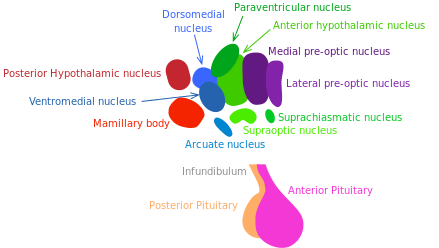
- Blogs
- Step1 Question of the Week #5

Step1 Question of the Week #5
A 23-year-old woman comes to her physician’s office for a follow up visit. She had recently been involved in a traumatic road traffic accident, where she fractured a few bones and also suffered from a mild concussion. There was no apparent injury to the brain evident on any diagnostic tests. She was kept under observation in the ICU for 24 hours and was then sent home with her family. It has been one month since the accident. Today, she has not complaints and says that she has been recovering well since the incident. Her only concern is that she has been losing weight unintentionally over the past month. She says that she doesn’t have much of an appetite and has to force herself to eat her daily meals. She has lost almost 7kgs since her accident. Her physician suspects a possible lesion to the brain that was probably not evident during the initial investigation. Based on her medical history, which of the following locations likely sustained an injury during her accident?
(A) Dorsomedial thalamic nuclei
(B) Lateral hypothalamic nuclei
(C) Ventromedial hypothalamic nuclei
(D) Ventral posterolateral thalamic nuclei
(E) Hypothalamic mammillary body